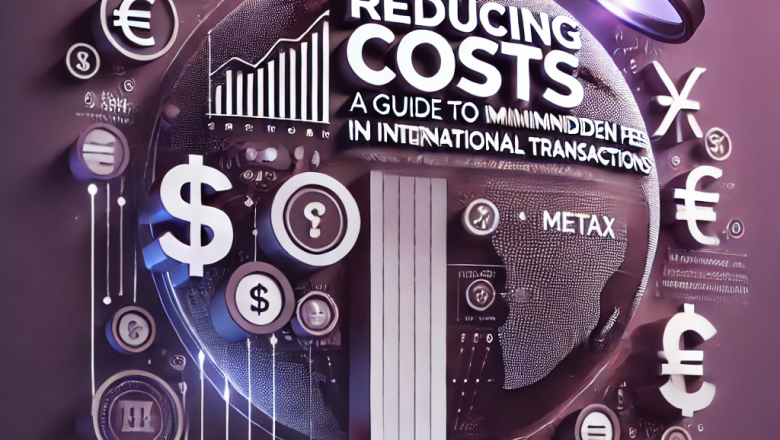views
Reducing Costs: A Guide to Minimizing Hidden Fees in
International Transactions
In today's globalized economy, businesses and individuals frequently
engage in international transactions. From e-commerce sales to overseas
investments, cross-border transactions are essential for growth and expansion.
However, hidden fees in these transactions can significantly increase costs and
reduce profits and budgets. Understanding these fees and how to minimize them
is important for businesses and consumers alike.
Anatomy of Hidden Fees in
International Transactions
1. Most people
focus on exchange rates and key transaction costs when conducting international
transactions. But there are often hidden fees lurking just below the surface:
2. Processing
fees: Many financial institutions charge a flat or percentage fee to process
international payments, which can add up over multiple transactions.
3. Intermediate
bank fees: With SWIFT or wire transfers, intermediate banks may deduct fees as
the transfer progresses, reducing the amount the recipient ultimately receives.
4. Receiving
bank fees: Some banks charge a recipient fee to process incoming international
funds.
5. Dynamic
Currency Conversion (DCC): When paying by card abroad, you can use DCC to pay
in your home currency. While this is convenient, the exchange rates used are
often unfavourable.
Strategies to Minimise
Hidden Fees
Fortunately, there
are effective ways to cut these costs and keep more of your money when making
international transactions.
1. Choose a transparent
payments provider Choose a service that discloses its fees and use of
mid-market rates. Fintech platforms like Metax Payments are often more
transparent and cost-effective compared to traditional banks.
2. Use a multi-currency
account: Holding and executing transactions in multiple currencies can
eliminate the need for frequent currency conversions and save on conversion
fees.
3. Bundle transactions: When
possible, combine several smaller transactions into one larger transaction to
reduce the cumulative impact of per-transaction fees.
4. Negotiate with banks:
Businesses with high transaction volumes can negotiate lower fees and better
exchange rates with their banks.
5. Avoid DCC: Always choose to
pay in local currency if you have the option. This will help you avoid
excessive conversion rates by retailers and card processors.
6. Monitor and compare
providers: Regularly review your payment methods and compare the rates and fees
of different providers. Switching to a more competitive service can lead to
significant savings.
7. Use blockchain-based
solutions: Cryptocurrencies and blockchain platforms offer cost-effective and
secure cross-border payment options without the involvement of intermediary
banks.
The role of technology in reducing costs
Modern technology is revolutionizing international payments and offering
innovative ways to reduce costs.
• Low-fee payment gateways: Platforms like Metax Payments simplify
cross-border payments with minimal fees and competitive exchange rates.
• Artificial intelligence: AI-powered systems can analyze patterns and
recommend the most cost-effective way to send money internationally.
• Mobile wallets: Services like PayPal and Wise (formerly TransferWise)
allow fast, affordable international transfers without traditional bank fees.
Understand Regulation and Compliance
Compliance with international regulations is key to minimizing costs.
Non-compliance can result in heavy fines and wipe out all your savings.
• Stay up to date on anti-money laundering (AML) laws and
know-your-customer (KYC) requirements.
• Use approved payment channels to avoid penalties and processing
delays.
• Work with a compliant payment provider such as Metax Payments to
ensure your transactions meet regulatory standards.
Case Study: A Business Perspective
Consider an e-commerce company selling products internationally. Before
switching to a transparent payment provider, the company was paying up to 5% of
revenue in hidden fees. As a result of introducing multi-currency accounts and
using a platform such as Metax Payments, they reduced their transaction costs
by 40%, improving profitability and allowing them to reinvest in growth.
Final Thoughts
Minimizing hidden fees in international transactions isn't just about
saving money; it's also about optimizing financial efficiency. Businesses and
individuals can make smarter decisions by understanding what causes hidden
costs and leveraging the latest financial tools and strategies.
Whether you're an entrepreneur, a freelancer, or someone sending money
to family overseas, prioritizing transparency, technology, and negotiation can
make a big difference. Find a solution like Metax Payments to help you keep
more of your hard-earned money and get the most out of every international
transaction.






















Comments
0 comment